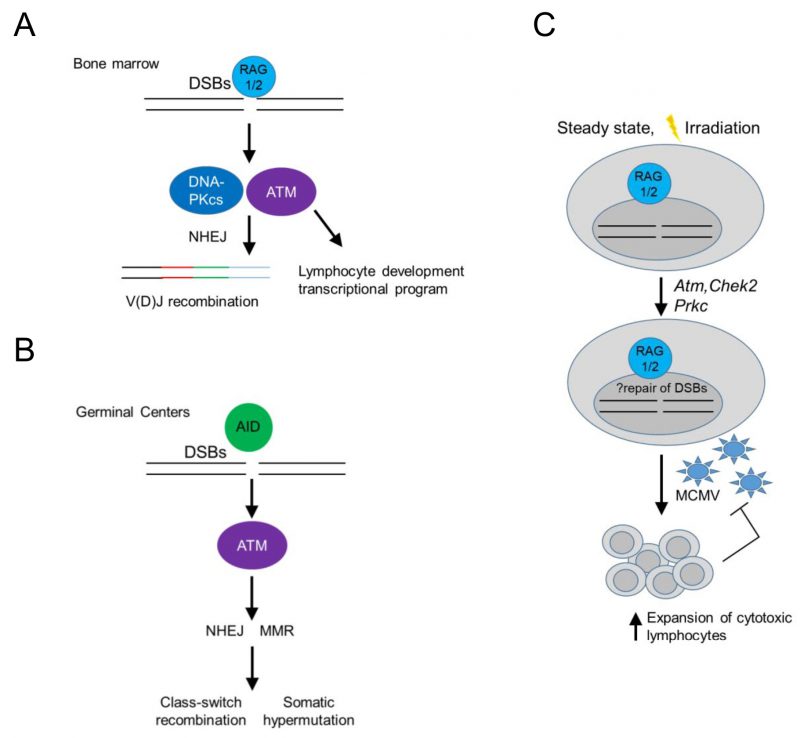Back to article: Genotoxic stress signalling as a driver of macrophage diversity
FIGURE 2: RAG introduce programmed dsDNA breaks during the assembly and diversification of lymphocyte antigen receptor gene may promote cellular fitness of cytotoxic lymphocytes. (A) RAG (recombination-activating genes)-induced dsDNA breaks activate DNA-PKcs (DNA-dependent protein kinase, catalytic subunit) and ATM (ataxia-telangiectasia mutated), initiating a canonical DDR that leads to double strand break repair by NHEJ (non-homologous end joining), while ATM signaling additionally induces a non-canonical DDR that regulates cell type-specific, developmental programs in B cells in the bone marrow. (B) In mature B cells, antigen stimulation and co-stimulatory signals induce AID (activation-induced deaminase) – dependent breaks that activate ATM, initiating a non-canonical DDR that promotes activated B cell receptor diversification in germinal centers, employing several repair pathways, such as mismatch repair (MMR). (C) RAG-induced dsDNA breaks upregulate the expression of DDR-related genes, such as Atm (encoding ataxia telangextasia mutated), Chek2 (encoding checkpoint kinase 2) and Prkdc (encoding DNA-dependent protein kinase, catalytic subunit (DNA-PKcs)) in NK and CD8 T cells, which may increase their ability to deal with genomic instability upon virus-induced proliferation and cellular stress, thus facilitating their population expansion and cytotoxic effector functions.

